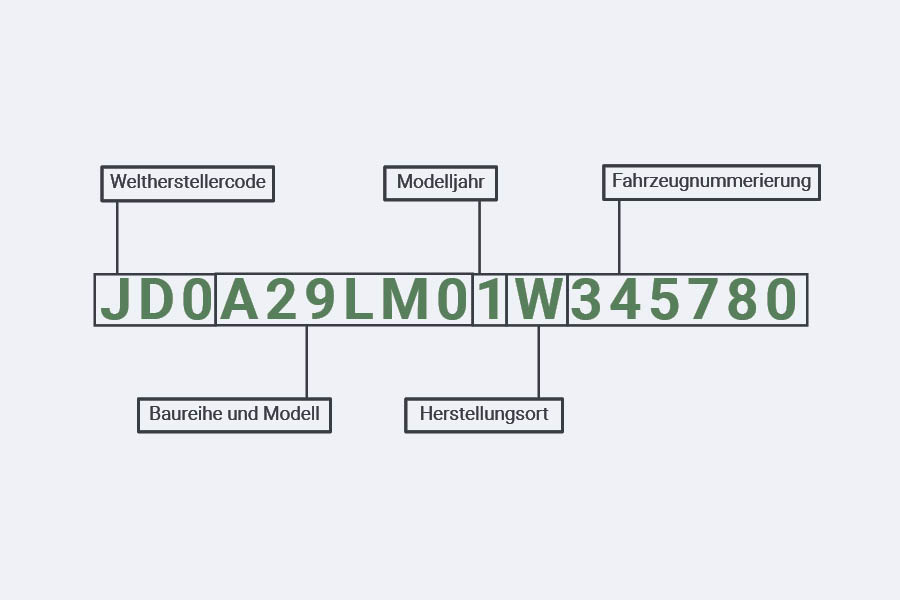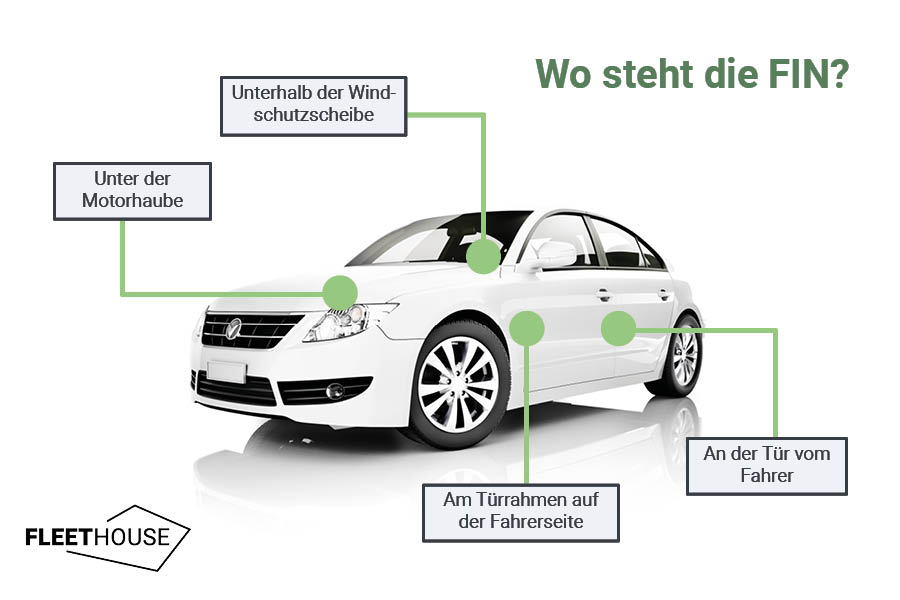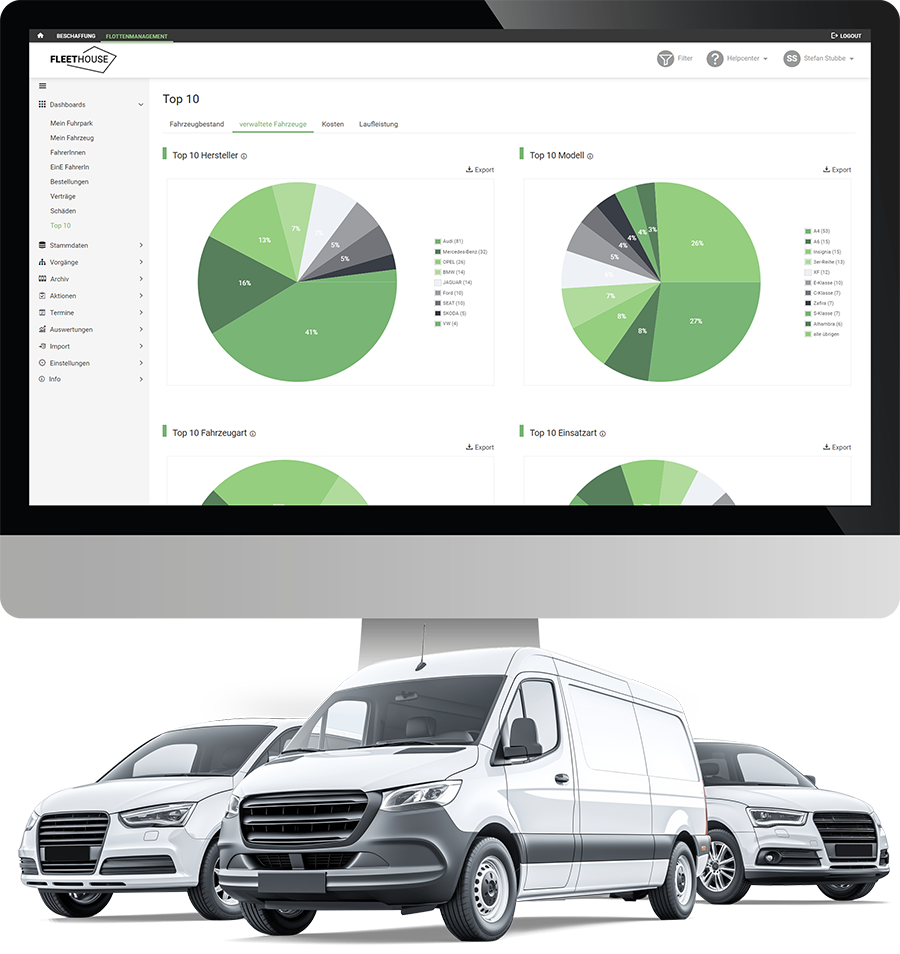The vehicle identification number (VIN) plays a decisive role in the identification and differentiation of vehicles. A so-called VIN query can reveal important information about the vehicle and is used to upload certain vehicle data to fleet management software, for example. In this article, we will show you what information you will receive about the vehicle and what the individual numbers and letters in the chassis number stand for.
Contents
What is the FIN?
A vehicle identification number (VIN) or chassis number is a unique identifier that is assigned to each vehicle and contains information about its manufacturer, model, equipment and origin. It is also referred to as VIN and stands for Vehicle Identification Number. The terms “vehicle identification number” and “chassis number” are often used interchangeably and have the same meaning. The VIN serves as a unique identification feature for each vehicle and enables a clear assignment to a specific vehicle model. The fingerprint of a vehicle, so to speak.
How is a FIN structured?

As a rule, the FIN consists of 17 characters comprising numbers and letters, with the exception of I, O and Q to avoid confusion with the digits 0 and 1. Every single letter and every number has a specific meaning.
- The characters from 1 to 3 of the VIN provide information about the manufacturer of the vehicle. These three characters are also known as the world manufacturer code (WMI ).
- Symbols 4 to 9 provide information on the vehicle model, vehicle type and series.
- The symbol provides information about the model year. Provides information about the model’s first year of production.
- The symbol at position 11 provides information about the place of manufacture.
- The last characters from 12 to 17 provide information about the individual characteristics of the vehicle and are manufacturer-specific.
Where can I find the chassis number?
There are various ways to find out the VIN of the vehicle. On the one hand, it is listed in the registration certificate of the vehicle. It can be found both in the vehicle registration certificate (registration certificate part 1, field “E”) and in the vehicle registration document (registration certificate part 2, field “4”).
The vehicle identification number (VIN) can also be found in various places on the vehicle. Here are some common places where the FIN can usually be found:
- Dashboard: The VIN is normally located at the bottom of the dashboard on the driver’s side. It can be read from the outside through the windshield.
- Driver’s door: In some vehicles, the VIN is affixed to a sticker or sticker on the B-pillar of the driver’s door. The B-pillar is the area between the driver and passenger doors.
- Engine compartment: The VIN can also be found in the engine compartment on a sticker or sticker. It is usually attached in a clearly visible place, such as on the bodywork or engine block.
- Underside of the vehicle: In some cases, the VIN is also stamped under the vehicle or affixed to a sticker on the underside of the vehicle. This may be the frame or other structural parts of the vehicle.
The exact position of the VIN may vary depending on the vehicle manufacturer and model. In some vehicles, the VIN can also be found in additional places, such as in the trunk, in the spare wheel compartment or near the fuel tank.

According to § 59 of the Road Traffic Licensing Regulations (StVZO), a vehicle identification number must be affixed “(…) in an accessible place on the front part of the right-hand side, clearly legible and permanently (…)”.
Why is a VIN query important?
The VIN is used to check the vehicle history and to identify stolen vehicles. Interested parties can use the VIN to obtain information on the previous ownership, accident history and maintenance status of a vehicle. Insurance companies and law enforcement agencies use the VIN to track vehicle data and detect vehicle-related crimes.

Fleet Management
Organize all tasks relating to your vehicles with Fleethouse.
The chassis number reveals the vehicle equipment
The chassis number is not only used to check the vehicle history. It can also facilitate data uploads with detailed vehicle information in the area of fleet management, thereby saving time. By entering the number in the software, information about the vehicle is uploaded directly. Important vehicle-related fields are filled in automatically, such as the car make, model, year of manufacture or standard and optional equipment.
How can a FIN query be carried out?
A VIN query makes it possible to obtain detailed information about a vehicle. There are various ways to carry out a FIN query:
- Vehicle manufacturer or dealer: The vehicle manufacturer or authorized dealer may be able to provide information about a vehicle based on the VIN and perform a VIN query.
- Online services: There are various online services and databases such as DAT or Schwacke that offer VIN queries. This query may be subject to a charge, but often provides comprehensive vehicle information, including accident reports, recalls, maintenance records and theft checks. To carry out the VIN query online, you must enter the VIN in the corresponding search field to obtain the requested information.
Free webinar
In our webinar, you will receive practical instructions on what to look out for in fleet management – from legal aspects to financing.
The most important facts about the FIN query
The vehicle identification number (VIN) is an important tool for uniquely identifying vehicles and tracking vehicle histories.
The VIN query can also be carried out online via corresponding portals.
It offers extensive information on previous ownership, accident history or the maintenance status of a vehicle.
Further Fleet Knowledge
If you liked this article and would like to know more about this topic, we recommend these articles.



